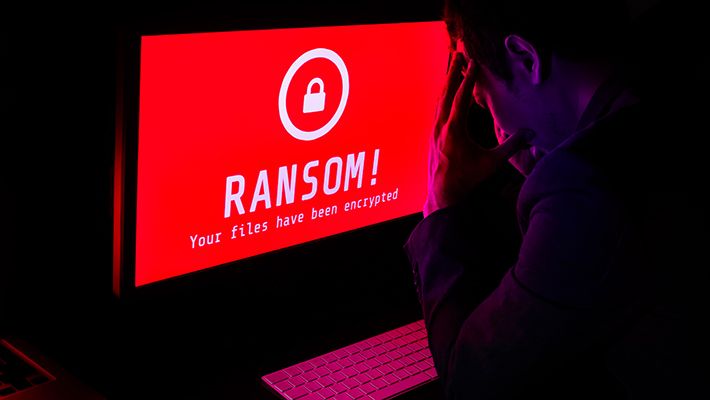May 12, 2023
Ransomware: everything you need to know to protect yourself
Contents
What is ransomware and how does it work?
This article will give you an overview of Golang and Nodejs. All of these provide their own set of benefits and drawbacks. It should be used one or the other depending on your needs. In most cases, ransomware infection occurs as follows. Ransomware can be delivered to a victim's computer in a number of ways, including phishing emails, malicious attachments and infected websites. Once the ransomware has infected a system, it will begin to encrypt files and demand payment. It is important to note that paying the ransom does not guarantee that the attacker will provide the decryption key. The ransom is usually demanded in Bitcoin or other types of cryptocurrency, which makes it difficult to trace the payment. In fact, in some cases, paying the ransom can lead to even more attacks. This is an expanding risk, making billions of dollars in transactions while causing substantial disaster and spending for both companies and organizations.

Type of ransomware
Encrypting Ransomware: The most common type of ransomware is encrypting ransomware, also known as Crypto Ransomware; it encrypts user data (files and folders). They will silently connect to the attacker's server after infiltrating your computer, generating two keys - a public key to encrypt your files and a private key held by the hacker's server, which will be used for decoding. They threaten to destroy data if the ransom is not paid - except when the ransomware destroys the data regardless of the ransom is paid.
Non-encrypting: Non-encrypting ransomware (also known as Locker) is a form of malware that does not encrypt the files of the victim. However, it locks and disables the user's access to the device. The victim will be unable to perform any kind of computer operations (other than turning on and off the screen). On the screen, comprehensive directions will appear on how to pay the ransom so that the user can access and use his device again.
Leakware (Doxware): Types of ransomware compromise render the information of a victim publicly available online if an encryption key payment is not made. Since multiple individuals store sensitive files or private images on their personal computers, it is unavoidable that they will panic and attempt to pay ransom to hackers.
Mobile ransomware: Instead of encryption of data, mobile ransomware appears as software that prevents users from accessing it (a type of non-encryption). Because automated cloud data backups, which are common on many mobile devices, make it simple to recover from encryption attacks.
Virus and Ransomware
Viruses and Ransomware are both malicious software (also known as malicious code, English is 'malware'). The virus is a term for malware that has the ability to spread and spread extremely quickly, to the point of being uncontrollable.
Meanwhile, Ransomware is software designed with the purpose of "blackmailing the victim". Normally, to spread ransomware, bad guys need to use phishing methods to lure users into "fishing".
Due to these two different characteristics, only a very small number of malware are considered as Ransomware Virus. The term Ransomware Virus is used to refer to ransomware that has a "particularly terrible" speed. Prominent among them is a ransomware virus called WannaCry.
How to prevent a ransomware attack
Preventing a ransomware attack should be a top priority for anyone who owns a computer. Here are some simple steps you can take to protect yourself:
- Keep your software up-to-date: Software companies often release updates that fix vulnerabilities that hackers can exploit. By keeping your software updated, you can minimize the chances of being targeted
- Install antivirus software: Antivirus software can detect and remove ransomware before it has a chance to do any damage. Make sure you keep your antivirus software up-to-date as well.
- Use strong passwords: Weak passwords are easy for hackers to crack. Use strong, complex passwords that include a combination of letters, numbers and special characters.
- Be cautious when clicking links: Don't click on links in emails or on websites that you don't trust. If you're not sure if a link is safe, hover your cursor over it to see where it leads.
- Backup your data: Make sure you have a backup of all your important files. This way, if you are targeted by ransomware, you can restore your files without having to pay the ransom. By following these simple steps, you can greatly reduce your risk of being targeted by ransomware. Stay vigilant and stay safe!
Conclusion
WannaCry is most likely not such a strange name to those interested in technology and security. This malicious code wreaked chaos on 250,000 computers in 116 countries, including Vietnam, in 2017. Others consist of Bad Rabbit, NotPetya, GandCrab, Reveton (2012), CryptoLocker (2013), CryptoWall (2014), TorrentLocker (2014), Fusob (2015) and SamSam (2016). The worldwide cost of the damage caused by this software is millions of dollars.
Malicious code typically targets businesses, health organizations, government and education, but it does not exclude individuals who become victims. A single click can effectively "freeze" the entire user computer system.
Hackers' tricks are becoming increasingly sophisticated and the way ransomware works is also unpredictable. When a new type of ransomware is released, the majority of infections are unable to recover data. As a result, what's most significant is that you arm yourself with ransomware prevention knowledge today in order to avoid unfortunate situations.